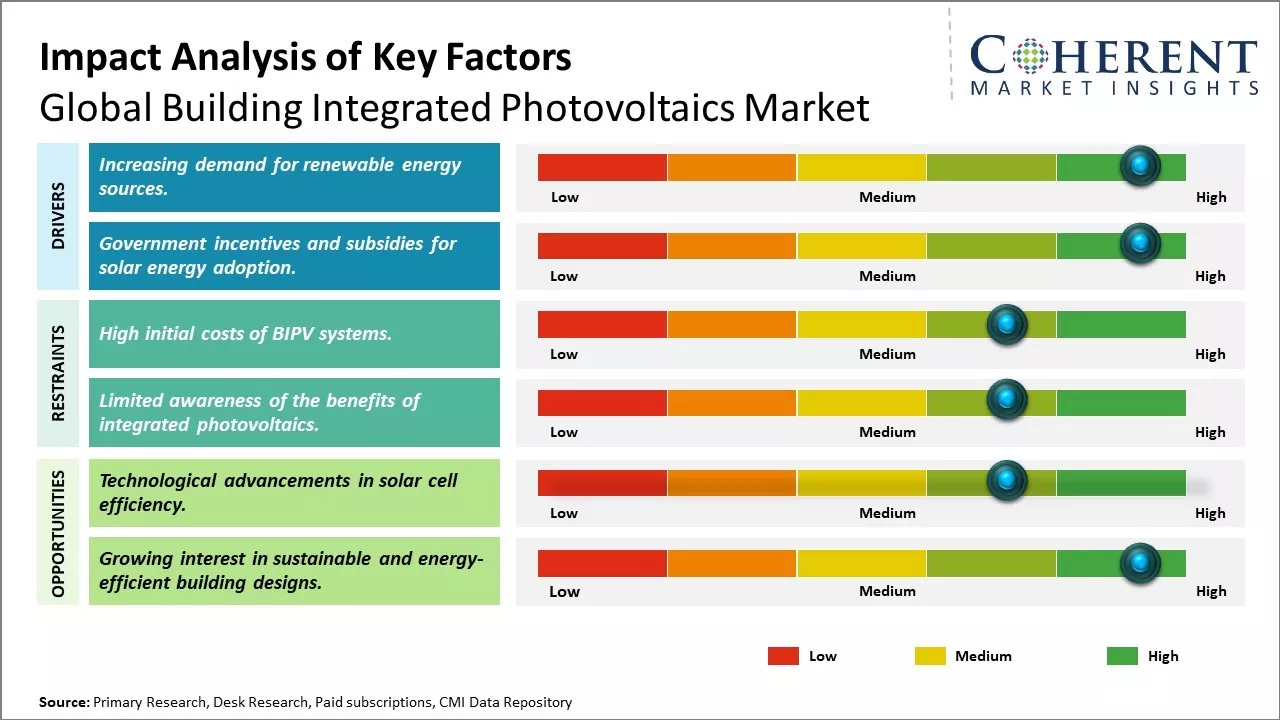Global building integrated photovoltaics market is estimated to be valued at USD 33.11 Bn in 2025 and is expected to reach USD 103.68 Bn by 2032, exhibiting a compound annual growth rate (CAGR) of 17.7% from 2025 to 2032.

To learn more about this report, Request sample copy
Global building integrated photovoltaics market growth is driven by accelerating transition to renewable energy sources and embrace of green building codes promoting zero-energy building design. Key trends contributing to the market growth includes rising demand for aesthetically appealing and energy-efficient building facades, increasing consumer awareness about renewable energy sources, growing focus of real estate developers on green construction, and supportive government policies and incentives promoting solar power generation.
Increasing demand for renewable energy sources
Growing environmental concerns around the world have prompted many countries as well as the public to shift towards cleaner and greener sources of energy like solar. There has been increase in energy demands of the global population due to economic growth and rising standards of living. According to data from World Meters in 2025, global population is growing at an approximate rate of 0.91% per year. This growth rate translates to an annual increase of about 73 million people. This steady rise in population highlights the ongoing demographic changes and the need for effective planning in areas such as resource management, infrastructure, healthcare, and food security to accommodate the growing number of individuals worldwide. Fossil fuels which have traditionally met majority of the global energy needs are leading to various environmental issues like climate change when burned. This has boosted need for countries and companies to move towards sustainable energy alternatives.
Solar energy provides several advantages as compared to traditional fossil fuels as it is abundant, universally available and completely clean. However, the large-scale adoption of solar power was hindered in the past due to high upfront capital costs of installation. Building integrated photovoltaics or BIPV offers a promising solution to this issue by allowing the solar panels to become an integral part of the building infrastructure. With BIPV, solar panels can be installed as the exterior component of a new building like roof or walls during construction itself. This eliminates additional costs and effort of setting up solar panels as a separate exercise after building is ready. As a result, BIPV solutions have become increasingly cost competitive compared to tradition solar power projects and find more takers.
Environmental concerns have only grown stronger amongst both public and private sectors. There has been growing understanding that energy independence through domestic renewable sources like solar and wind is critical for energy security of nations. Many countries such as India, China and other have outlined ambitious targets for increasing the share of renewable energy in their future electricity mix. Concerns around climate change have led many large private organizations to commit to transitioning to carbon neutral operations. All these long-term sustainability targets have significantly boosted the demand for viable solar energy solutions. With their seamless integrated design and construction capabilities, BIPV systems have emerged as a highly suitable technology to meet this increased demand for clean renewable sources of energy across large residential and commercial buildings.
Joining thousands of companies around the world committed to making the Excellent Business Solutions.
View All Our Clients